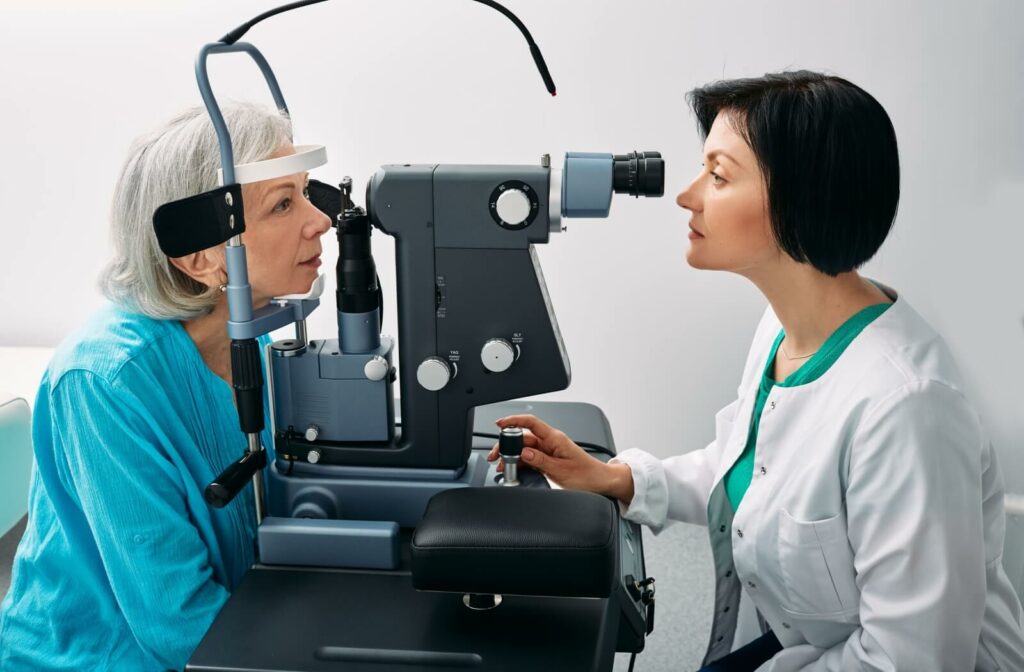The Relevance of Regular Exams with an Eye Doctor Optometrist
The Relevance of Regular Exams with an Eye Doctor Optometrist
Blog Article
Discovering the current Technological Innovations in Optometry and What They Mean for Eye Doctors
In the ever-evolving area of optometry, current technological developments are improving just how practitioners come close to eye care. From the accuracy of Optical Comprehensibility Tomography to the nuanced understandings offered by AI-driven diagnostic devices, these developments are setting new requirements in person analysis and therapy. Teleoptometry is poised to redefine availability, ensuring that experience transcends geographical restrictions. As these innovations permeate the practice, eye doctors are confronted with the obstacle of welcoming these devices to enhance patient outcomes. Yet, the concern stays: exactly how will these technical shifts redefine the functions and duties within the profession?
Developments in Diagnostic Tools
Advancing the field of optometry, technologies in diagnostic tools have revolutionized the way eye treatment specialists assess and identify aesthetic disabilities and eye problems. The previous years has experienced significant technical improvements, allowing more precise and thorough examinations. Optical Coherence Tomography (OCT), as an example, supplies high-resolution cross-sectional pictures of the retina, allowing for the early discovery of illness such as glaucoma and age-related macular degeneration. This non-invasive imaging strategy has actually become essential in modern optometric practice.
An additional secret development is the intro of innovative corneal topography systems, which map the surface area curvature of the cornea with precision. These tools are especially beneficial for suitable get in touch with lenses and identifying corneal problems. Additionally, electronic retinal imaging has actually changed traditional ophthalmoscopy, supplying in-depth, scenic sights of the retina that promote complete aesthetic exams.
The growth of wavefront aberrometry has also been important, enabling the analysis of refractive errors with unmatched precision (Opticore Optometry). This innovation helps in personalizing rehabilitative lenses and improving medical outcomes for refractive surgical treatments. Jointly, these diagnostic advancements equip optometrists to supply exceptional person care, making sure early treatment and customized therapy techniques, inevitably improving visual wellness end results
AI in Patient Administration
Building on the foundation of advanced analysis devices, the unification of man-made knowledge (AI) in patient monitoring stands for a transformative jump for optometry. AI systems are progressively employed to improve effectiveness, accuracy, and personalization in individual treatment.
Furthermore, AI-driven platforms promote structured individual communications and management processes. Automated organizing, digital assessments, and individualized follow-up strategies not just boost patient satisfaction however also enhance time monitoring for professionals. These systems can triage individuals based on the necessity of their problems, making sure that those in essential need obtain timely focus.
Additionally, AI improves decision-making by giving optometrists with evidence-based suggestions and therapy paths. By integrating information from electronic health documents, AI tools use insights that notify scientific decisions, reducing the danger of errors and improving client results. As AI continues to advance, its function in patient monitoring will likely broaden, reshaping the landscape of optometric treatment.
Advancements in Retinal Imaging
In the realm of optometry, retinal imaging has actually seen amazing technical developments that are enhancing analysis abilities and client care. Technologies such as Optical Comprehensibility Tomography (OCT) and fundus photography have actually revolutionized exactly how optometrists assess the retina and visualize. OCT, in specific, provides high-resolution, cross-sectional photos of the retina, permitting the comprehensive assessment of its layers. This ability is very useful for early discovery and management of problems like glaucoma, diabetic retinopathy, and age-related macular degeneration.
Improved imaging methods like OCT angiography are more refining analysis precision. This non-invasive technique maps blood flow in the retina, supplying vital understandings right into vascular health without the demand for dye injections. Additionally, adaptive optics technology is being incorporated right click this site into retinal imaging systems to correct eye aberrations, providing extraordinary picture clarity. Such improvements help with the identification of minute retinal changes that can represent disease development.
In addition, innovations in expert system are increasing retinal imaging by making it possible for automatic evaluation of large datasets. These systems aid eye doctors in recognizing patterns a measure of pathology, consequently improving analysis accuracy and performance. Jointly, these developments are transforming retinal imaging into a cornerstone of modern eye treatment, improving results and broadening healing possibilities.
Teleoptometry's Growing Function
Teleoptometry is significantly coming to be a crucial part of eye care, driven by developments in electronic communication and diagnostic devices. This is particularly advantageous in rural and underserved locations where accessibility to specialized eye care is frequently limited.
The assimilation of artificial knowledge (AI) further improves teleoptometry, making it possible for the evaluation of visual data and assisting in the discovery of eye problems such as glaucoma and diabetic retinopathy. AI-powered algorithms can swiftly interpret complex imaging information, offering optometrists with beneficial understandings that bolster professional decision-making.
In addition, teleoptometry sustains connection of care via smooth integration with electronic health records (EHRs), allowing eye doctors to maintain extensive patient histories. This guarantees that individuals obtain regular and personalized care also when seeking advice from different experts.
Despite these advantages, challenges remain, including ensuring information protection and taking care of person expectations. Nonetheless, teleoptometry represents a considerable stride in the direction of even more easily accessible, reliable, and patient-centered eye care. page As innovation progresses, its duty is poised to expand further.

Future Patterns in Eye Treatment
A myriad of innovative fads is established to improve the future of eye care, driven by technological improvements and the developing needs of people. One considerable trend is the integration of man-made knowledge (AI) in diagnostics, which promises to improve the accuracy and effectiveness of eye assessments. AI algorithms can examine vast quantities of information from retinal images, potentially finding problems like diabetic retinopathy and glaucoma earlier than conventional approaches.
Moreover, personalized medicine is obtaining traction in optometry, with genetic testing informing personalized therapy plans. This method aims to enhance individual outcomes by customizing treatments to specific hereditary accounts. Wearable modern technology, such as wise call lenses, is likewise imminent, supplying real-time surveillance of intraocular pressure or glucose levels, therefore supplying continuous understandings right into systemic and eye wellness.
The adoption of augmented reality (AR) and digital reality (VIRTUAL REALITY) in training and patient education is another emerging trend. These modern technologies provide immersive experiences that can improve understanding and abilities both for eye doctors and patients. As these fads progress, eye doctors should stay abreast of technical advancements to supply sophisticated care, guaranteeing enhanced individual outcomes and complete satisfaction in the vibrant landscape of eye care.
Final Thought

Jointly, these analysis innovations encourage eye doctors to supply premium patient care, ensuring Resources very early intervention and tailored therapy approaches, inevitably boosting visual health and wellness outcomes.

As these innovations continue to evolve, optometrists should adapt and incorporate them right into method, inevitably enhancing operations efficiency and boosting the standard of eye treatment provided to individuals.
Report this page